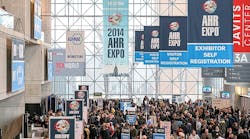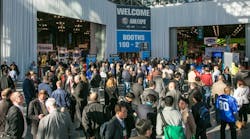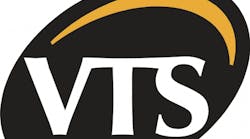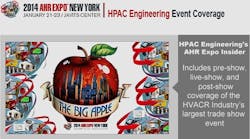Latest from Mike Weil
Can HVAC Be Fun? What About All the Eye Candy?
HVAC Water Management: Big Changes Ahead
Welcome to our new AHR Expo Insider Coverage
How Did The HVAC Industry Do in 2013?
Weil I'm Thinking of It: Some Thoughts on the Aftermath of the HVAC Industry's AHR Expo
It was another cold and “blizzardy” week in New York City from Jan. 21-23, while the mechanical systems industry convened at the 2014 AHR Expo. When I say blizzard, I’m talking about a snowfall of 10 in. or more that crippled the city’s traffic infrastructure and created a state of emergency in parts of the state.
Despite the cold and the snow (and the ever-thinning availability of cabs and buses), attendees managed to fill the Jacob Javits Center to the tune of more than 61,000 bodies who made the most of this event. For this editor, that is an amazing number of attendees. They hailed from all 50 U.S. states as well as 130 countries worldwide. They crowded the aisles and halls to see what the HVAC world had to offer and they weren’t disappointed.
As I walked the show and attended meetings, I noticed there was a different kind of buzz this year. Instead of the typical throngs crowding to one area or another focusing on the newest Internet control or design technologies, the buzz was more spread out. Interest seemed to be in all things mechanical—from filters and thermostats to unitary equipment and controls and everything in between. Yes, there was the typical interest in all things wireless, but I sensed attendees wanted to learn more about how to build systems and make money than the typical oohs and ahhs that Internet technologies seem to always engender.
One big factor for this was the widespread introduction of variable-refrigerant-flow (VRF) technologies—both for commercial and residential applications. Even some of the big brand manufacturers were showcasing their iterations of these technologies in their products. For example, Carrier earned an honorable mention in the AHR Expo Innovation Awards program for its Toshiba Carrier heat-recovery VRF system, which allows simultaneous heating and cooling in individually controlled zones. Toshiba Carrier VRF systems provide building owners an extensive range of inverter-driven systems, including adaptive compressor control down to 0.1 Hz, which increases the efficiency of the equipment while improving comfort as well.
This is the type of smart technology that was pervasive at this year’s event. And speaking of smart technologies, this year marks the 20th anniversary of Echelon/LonMark and to celebrate, the group announced its “multi-protocol system-on-a-chip” for the building industry. This protocol is designed to help original equipment manufacturers to develop equipment that can be deployed either as a LonWorks or BACnet device or both.
If that’s not big enough, LonMark 2.0 was also rolled out. According to Ron Bernstein, chief ambassador, and Mike Gibson, technical director of LonMark International, this moves the building industry much further down the road to control interoperability.
Gibson says this provides a new method of extending the LonMark object model beyond existing ISO/IEC 14908 transports to include IPv6 and other IP-based transports. He says this is called LonMark Advanced Transport Services (ATS). In addition, Gibson says the 2.0 release creates a Profile Markup Language (PML) that extends the LonMark profile model to provide a general purpose way to define interoperable profiles for devices used in IIoT.
Gibson adds that the 2.0 release creates a transport markup language (TML) for standardizing translation of data across several industry protocol standards such as BACnet, KNX, EnOcean, Smart Energy Profile, and MODBUS.
This is just a taste of what happened in New York. Go online to our "Insider" web page for updates to what we found at the show and stay tuned for our March post-show coverage. You won’t want to miss it.













